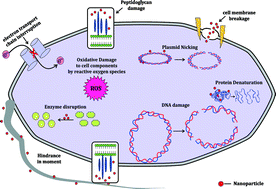Nanoparticles vs. biofilms: a battle against another paradigm of antibiotic resistance†
Abstract
Microbes form surface-adherent community structures called biofilms and these biofilms play a critical role in infection. Biofilms impart antibiotic resistance and sometimes become recalcitrant to the host immune system. It has been reported by the National Institutes of Health that more than 80% of bacterial infections are caused by biofilm formation. Such a kind of infection is also prevalent in biomedical devices which become a source of infection. The treatment of biofilm-mediated infections is a big challenge that requires more sensitive and effective antibiofilm strategies for their removal. Nanoparticles targeting antibiofilm therapy have gained tremendous impetus in the past decade due to their unique features. These nanoparticles are wonder particles having a wide spectrum of biological applications and among these applications their antibiofilm activity is significantly useful. These particles are reactive entities and can easily infiltrate into the matrix which acts as a barrier for many antibiotics. Biomedical surfaces are also nano-functionalized by coating, impregnation or embedding with nanomaterials to prevent biofilm formation. The study of interaction between nanoparticles and biofilms can provide us more insights into the mechanism of biofilm regulation. In this review article, several classes of NPs effective against a broad range of microbial biofilms, both in vivo and in vitro, are described. The application of nanoparticles against biofilms will help to fight resistant infections and will contribute in improving human health.


 Please wait while we load your content...
Please wait while we load your content...